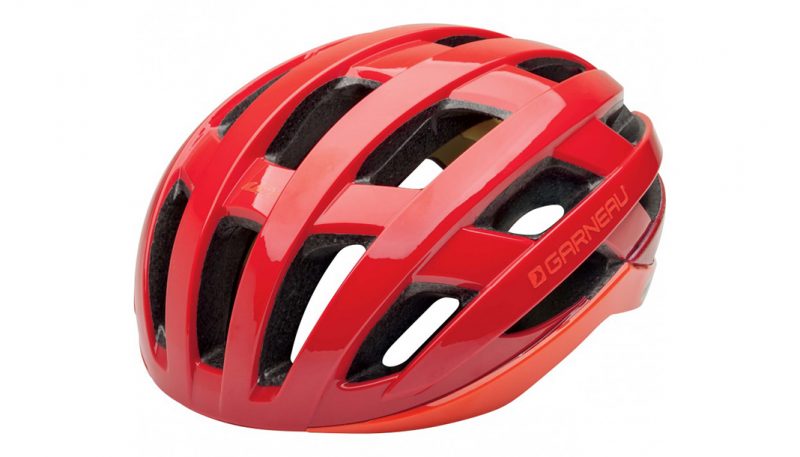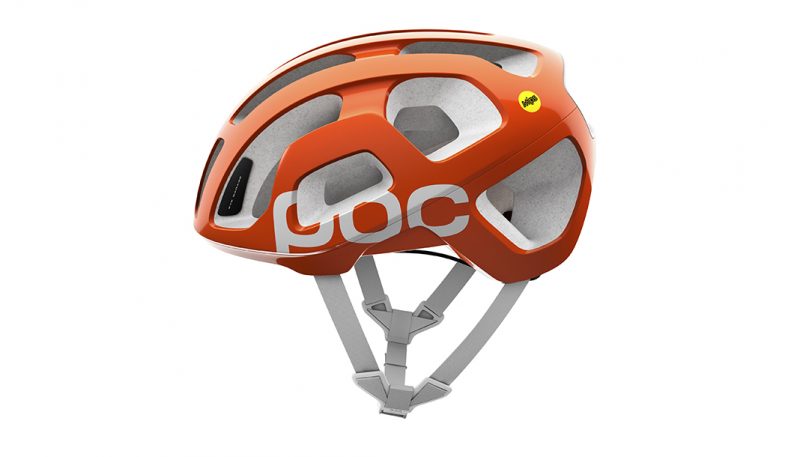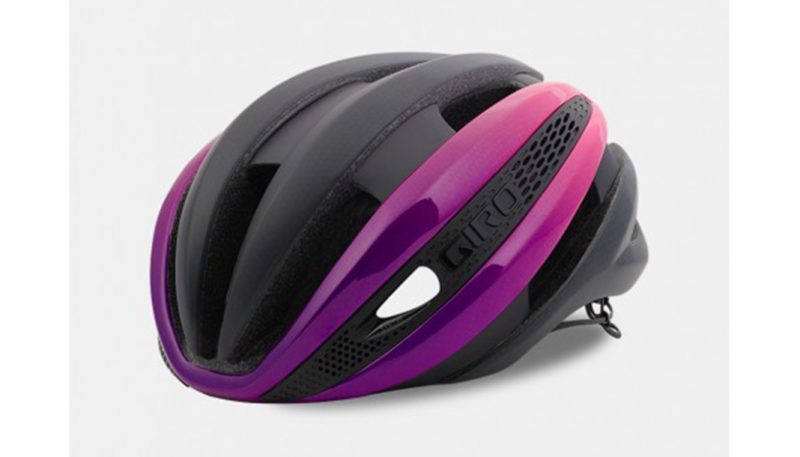2017 Road Cycling Helmet Test Results
Our reviews of road cycling bike helmets focus on the five criteria most bikers are looking for in a new helmet: comfort, ventilation, features, fit and weight. We don’t test protection because there is no objective way to rate whether one helmet is safer than another. We do confirm that all helmets have met basic safety certifications.
Comfort
With bike helmets, comfort comes from the symbiosis of padding, strap weight and the adjustment system. Although fit is also its own category, a well-fitting helmet contributes to comfort. The Louis Garneau Heros and the Specialized Airnet shared the highest score of eight in this category. The Heros comes with two sets of padding that is antimicrobial, washable and replaceable. It’s also thick enough to eliminate any pressure points without increasing heat on humid days. But if there was a category devoted entirely to padding, the Airnet MIPS would easily win on its materials alone: Merino wool. The natural fiber regulates temperature, dries quickly and mitigates odor. It wasn’t as thick as on the Louis Garneau, but it was more comfortable on warm days and long rides. The straps are also a critical element of comfort. While both helmet’s straps were lightweight and laid comfortably flat against our tester’s face, there were some unique differences. The Specialized Airnet straps 4x DryLite webbing uses a single layer of webbing (rather than the usual two) under the chin. When drenched with sweat they dried faster than all the other helmets in the test, including the Louis Garneau Heros. What points the Heros may have lost in its standard straps, it made up for in its Tri-Glide PRO and the Spiderlock 4D adjustment systems, which allow the cyclist to dial the helmet’s fit and position on the head for the highest degree of comfort.
The Smith Overtake also did well in this category, earning a score of seven. Its perforated padding consists of two thin and narrow strips that run front to back and halfway along the sides. These worked well to prevent sweat from dripping onto our tester’s face. Though minimal in both weight and breadth, it provided enough of a barrier between the scalp and the abrasive edges of the Koroyd tubes to make it comfortable. Strap webbing is thin and lightweight and laid flat along the side of our tester’s face. The Overtake lost points for its decreased ventilation due to the Koroyd tubes. Conversely, the Giro Synthe MIPS scored six points in this category due to its heavier strap webbing and minimal padding. Padding consisted only of a thin band at the forehead and a small patch at the crown. This minimal padding did not cause discomfort at pressure points, but contributed to excess sweat running down our tester’s forehead.
Rounding out this category was the POC Octal , which scored five points. Strap webbing was thin, lightweight, but padding was sparse and thin. Like the Synthe, the minimalist padding did not create any pressure point discomfort and came up short on moisture absorption. Fit of the Octal was the key to its decreased comfort, though. Our tester has a cone-shaped head, so to achieve the best fit she had to cinch the backband and crank down on the side straps, which caused her head to feel like it was being squeezed.
Ventilation
The POC Octal AVIP MIPS won the ventilation category alongside the Louis Garneau Heros RTR MIPS, with eight points each. Optimal ventilation is achieved by two components: the number and size of the air vents and the depth of the air channels. The Heros has 22 air vents that range in size from medium to large (in comparison to the vent sizes of the other helmets in this test). The Octal has 21 large air vents spaced further apart than the Louis Garneau, allowing air to flow through unimpeded. Although the padding thickness was not outstanding on either helmet, the padding was thick enough to create decent channels for good airflow.
Scoring seven points was the Specialized Airnet MIPS with 22 air vents. One might assume that this would translate to outstanding ventilation. It would have, except that the depth of the air channels was minimal due to the thinner padding. With 18 air vents, the Giro Synthe MIPS scored five points. The air vents range in size from small to medium (in comparison to the vent sizes of the other helmets in this test) and provided only moderate ventilation on high-exertion rides on hot and humid days. Additionally, a thin, plastic mesh screen covers two medium-sized vents on the sides, and thin and sparse padding reduced the Synthe’s ventilation even more.
The Smith Overtake MIPS scored the lowest in this category with four points. It has 21 air vents but it did not translate to optimal ventilation on high-exertion rides. Between each of the vents and the cyclist’s scalp is the honeycomb-like sheet of Koroyd tubes. Although it is an enhanced safety feature that protects the wearer’s head upon impact, it also partially blocks the air vents, making it the least-ventilated helmet in the test.
Features
Included among the feature category were crash safety designs, reflectivity and even the degree of pony-tail friendliness. The Smith Overtake MIPS received the highest score of eight in this category due to its safety features. Not only is it MIPS-equipped, it stands out among its competitors because of the Koroyd technology. Koroyd is a thick honeycombed sheet between the helmet and the head consisting of thousands of thermally-welded, miniature tubes that absorb impacts by elastically deforming. There are two downsides, though. The first is that Koroyd reduces ventilation. The second is that a cyclist can’t get a finger through the air vents to scratch an itch. Still, the Smith Overtake is our tester’s go-to helmet to wear in a crash because of its safety features. It’s also very ponytail-friendly.
The next tier for features was a three-way tie among the Louis Garneau Heros RTR MIPS, Giro Synthe MIPS and the POC Octal AVIP MIPS; each scoring seven points. The Heros and the Synthe were very pony-tail friendly, while the Octal was the least. For safety features, though, the Octal offers the highest protective surface space of all the helmets in the test, measuring 17 inches from front to back and 14.5 inches from ear-to-ear. Additionally, it is equipped with a POC ICE tag. This allows medical personal or other first responders to scan the tag of the injured or unconscious cyclist for quick identification and obtaining of critical medical information such as blood type, allergies, etc.
The most reflective helmet in the test was the Heros, with two high-visibility reflective strips and a reflective LG logo. It also offers good protective surface space, measuring 16 inches in length from front to back and 13.5 inches wide from ear to ear. The Giro Synthe MIPS also provides good coverage on the sides and back of the head; with the size small measuring 14.5 inches in length from front to back and 14 inches wide from ear to ear. It, too, has two small reflective stripes on either side of the helmet.
Scoring six points was the Specialized Airnet MIPS. Its surface space measures 17.5 inches from front to back and 15 inches from side to side, making it the highest in the test. That, and it being ponytail-friendly are the extent of its features.
Fit
Fit is critical for safety. If the helmet wobbles too much on the cyclist’s head or is so uncomfortable when cinched down that the cyclist has to loosen the straps, its ability to protect the cyclist in a crash is a lottery. Our tester evaluated fit based on her own head. The winners in this category were the Louis Garneau Heros RTR MIPS and the Smith Overtake MIPS, which both scored a nine. The Heros has multiple points of adjustability that allow for a truly dialed fit. The rubber Spiderlock 4D adjustment system allows the cyclist to adjust the helmet both vertically and laterally so that the helmet sits perfectly in place. Straps, once adjusted, stay put. Conversely, the Smith VaporFit dial-operated 360 degree fit system of the Overtake allowed for a secure and snug fit with no wobble.
The Giro Synthe MIPS earned a score of eight due to its Roc Loc Air fit system that allows for multiple points of adjustability, including vertically and laterally, via a glove-friendly clicker wheel that can be easily adjusted on the fly. The fore and aft straps are connected via sturdy flip-style clips that make for fast and easy adjustment.
With a score of six was the Specialized Airnet MIPS. The Airnet either fits right out of the box or it doesn’t, thanks to the Tri-Fix web splitter. The Tri-Fix web splitter sits well below the ear lobes and spreads the two upper lengths of webbing into a wide U-shape around the ears (instead of a standard V shape). However, it is not adjustable in any way. As a result, our tester was unable to remove the slack in the fore and aft straps and the chin strap can never be comfortably centered. Although this contributes the helmet’s light weight, it also reduces the ability to accommodate a wide range of skull sizes.
Rounding out the category was the POC Octal AVIP MIPS with a score of four. The MIPS liner can make a helmet feel as if it is sitting suspended above the cyclist’s head. Our tester did experience this suspended feeling with this particular helmet. It was somewhat counteracted by cranking down on the side and chin straps and tightening the backband. A click wheel at the back of the helmet adjusts the rear-retention band, but due to its diminutive size is difficult to do on the fly and with sweaty hands, fingers or gloves.
Weight
Weight is important to consider because a heavy helmet can cause neck and shoulder fatigue on long distance rides and even going over bumps. The POC Octal AVIP MIPS, with seven points, scored the highest with the lowest weight of all the tested helmets: 254 grams – quite a feat considering its generous head coverage. Weight saving comes from the materials, lightweight strap webbing and minimal padding. The Specialized Airnet MIPS and the Giro Synthe MIPS, were the second lightest helmets in the test at 270 grams each, earning them a score of six. Scoring a five were the Louis Garneau Heros RTR MIPS and the Smith Overtake, which were the heaviest helmets in the test at 288 and 291 grams respectively.
Review Conclusion
A helmet is the one piece of equipment that a cyclist should never scrimp on (or purchase used). It’s the protective layer between the skull and the ground or objects and is the line in the sand between a severe or life-ending injury and many years of riding.
After riding with five different road bike helmets, our tester ultimately selected the Louis Garneau Heros as the Best in Class because of its bang for the buck. It offers MIPS, outstanding head coverage, ventilation and fit at a price point of $199. On the opposite end of the price spectrum was the POC Octal at $320, which happened to be the lowest scoring helmet due to its lack of fit, which came as a shocking surprise. (Our tester’s mountain bike helmet is a POC Trabec Race MIPS and its fit and comfort are excellent.) But what the POC Octal lacked in overall fit and comfort, it made up for in features and ventilation. The low score came about due to the fact that our tester’s cone-shaped head didn’t quite mesh with the Octal’s design.
The Smith Overtake, placed second overall, combined MIPS with Koroyd technology to enhance its impact-resistance and protection for the cyclist. It just didn’t impress in terms of ventilation in the hot and humid Minneapolis summer.
The Specialized Airnet placed third and, with a price point of $170, is hands-down the best value. (When our tester conducted a mountain bike helmet test last year, the Specialized Ambush emerged as Best in Class.) While she loved the Merino wool padding, comfort and outstanding coverage, the lack of adjustability with the side straps compromised the fit. In fourth place is the Giro Synthe. Our tester loved the look and feel of this helmet. It is low profile and unobtrusive, while offering a sleek and racy look. If sexy was a category, the Synthe would get a perfect “10.” Fit was among the best of all the helmets, but the thickness and amount of padding left much to be desired. It’s like Giro produced a work of art when it made the Synthe but then added padding as an afterthought. Ventilation was also a factor. When riding at break-neck speed, it was fine. But most of our tester’s urban cycling is commuting to work on bike paths and it’s tough to achieve and maintain maximum speed when you’re sharing the route with other cyclists, stroller-joggers and walkers.
Test Methods
Our tester focused entirely on the helmet’s comfort and fit, and all the elements that contribute to comfort and fit, such as ventilation and weight. Features were also considered, such as the helmet’s capacity to protect the cyclist’s head upon impact. Our tester did not test a helmet’s impact protection. The helmets were tested while riding on asphalt in and around Minneapolis and St. Paul on days with temperatures ranging from the low 40s to the mid-70s and on distances that ranged from six miles to 56 miles.










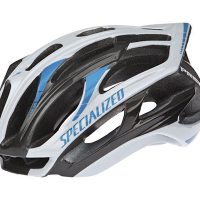
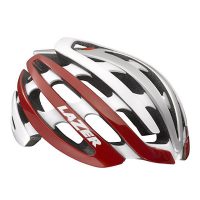
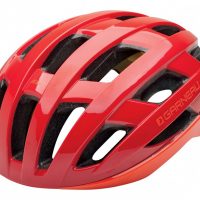
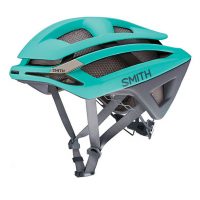

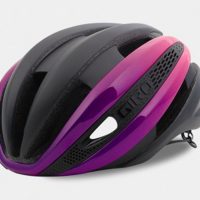
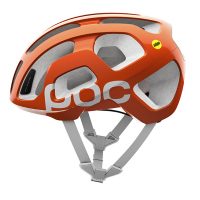
 87
87 